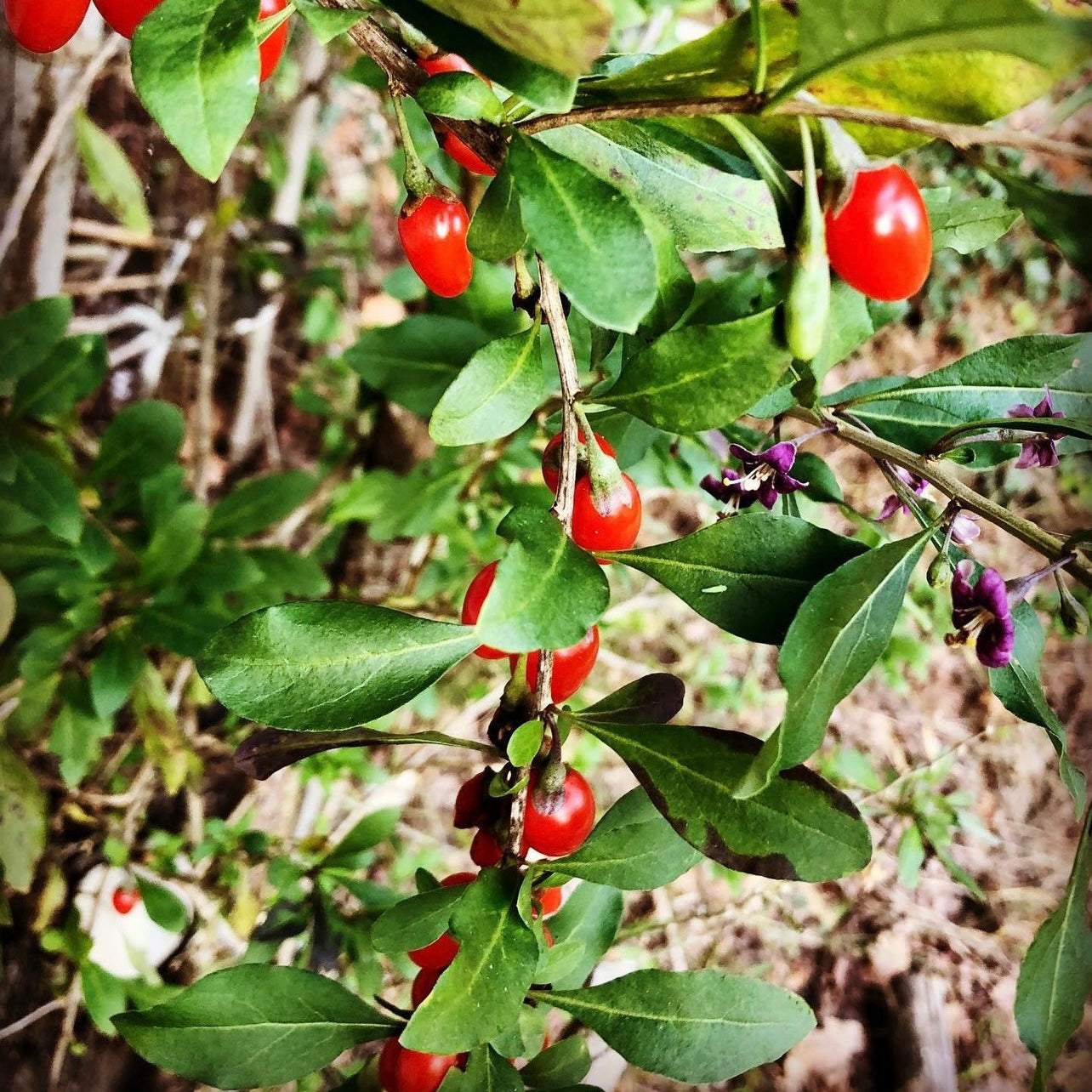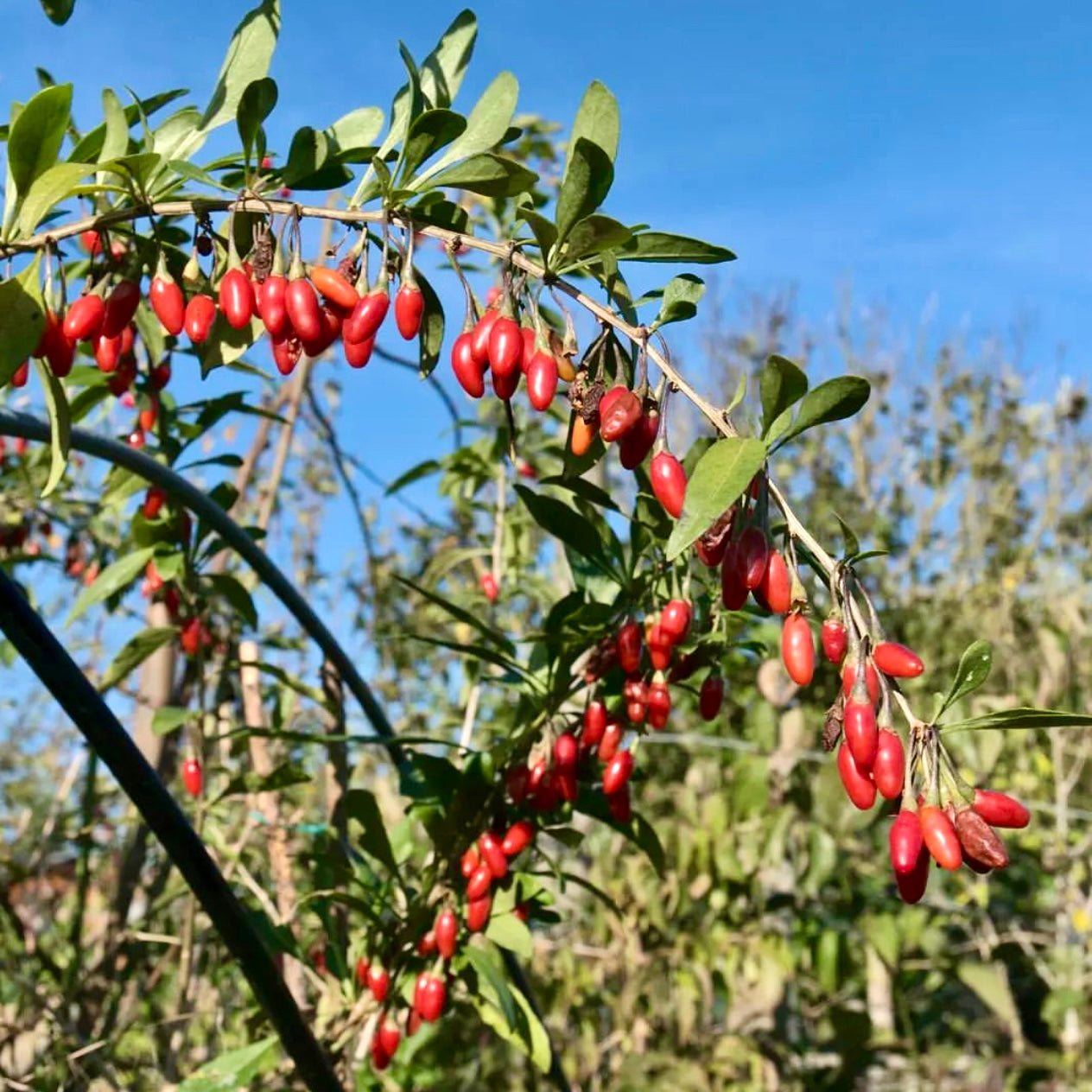Goji (Lycium barbarum)
Goji (Lycium barbarum)
Couldn't load pickup availability
Why We Grow It
Why We Grow It
Goji Berry is a valuable addition to food forests and permaculture designs due to its nutritional benefits, ease of growth, and ecological contributions. Its berries provide a high-value food source for humans, while the plant’s flowers and fruit support pollinators and wildlife. The shrub’s adaptability to poor soils and resilience in harsh conditions make it an excellent choice for marginal areas or restoration projects.
How the Plant Grows
How the Plant Grows
Goji Berry grows as a sprawling, thorny shrub with arching branches. It produces purple, bell-shaped flowers in early summer, which give way to clusters of bright red, oval-shaped berries that ripen from late summer through fall. The plant’s deep root system makes it drought-tolerant once established, while its rapid growth and adaptability to diverse soils ensure reliable productivity. Pruning helps maintain its size and shape, encouraging better fruit yields
Plant Size
Plant Size
Size at Maturity- Shrub layer. Grows to 6-10 feet tall with a spread of 3-6 feet.
Current Size- 10"-16", 1 year old rooted cuttings
Additional Info
Additional Info
The Goji Berry has been cultivated for over 2,000 years, particularly in China, where it is revered for its health-boosting properties. The berries are rich in antioxidants, vitamins A and C, and iron, making them a staple in teas, smoothies, and dried snacks. In addition to its nutritional benefits, Goji Berry leaves are sometimes used as a vegetable in traditional dishes. The plant’s flowers attract pollinators, while its berries feed birds and other wildlife, enhancing biodiversity. In agroforestry systems, Goji Berry serves as a resilient, low-maintenance crop that supports both ecological health and economic resilience.
The Goji Berry, also known as Wolfberry, is a nutrient-dense superfruit that has been cultivated for centuries in traditional Chinese medicine and cuisine. This fast-growing, hardy shrub produces bright orange-red berries packed with antioxidants, vitamins, and minerals. Ideal for temperate climates, the Goji Berry thrives in diverse conditions, making it an excellent addition to permaculture and food forest systems. It will layer itself and create clones that you can dig up and transplant elsewhere but make sure to contain its spread
Share


Plant Highlights
-

Water
Requires consistent moisture during establishment; drought-tolerant once established but benefits from regular watering during fruit production
-

Pollination
Self-pollinating but benefits from pollinators and other bushes for higher yields
-

Soil
Thrives in well-drained soils, tolerating sandy, loamy, and slightly alkaline conditions; prefers a pH range of 6.0-8.0
-

Years to Bear
Begins fruiting in 1-2 years from planting
-

Hardiness
Thrives into Zone 3, tolerating temperatures as low as -40°C
-

Solar
Prefers full sun, though it can tolerate partial shade
Subscribe to our emails
Lots of Free Growing Info. Be the first to know about new plants and exclusive discounts.








